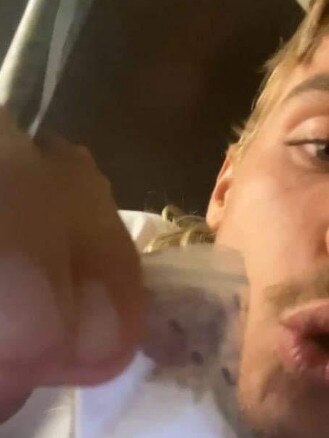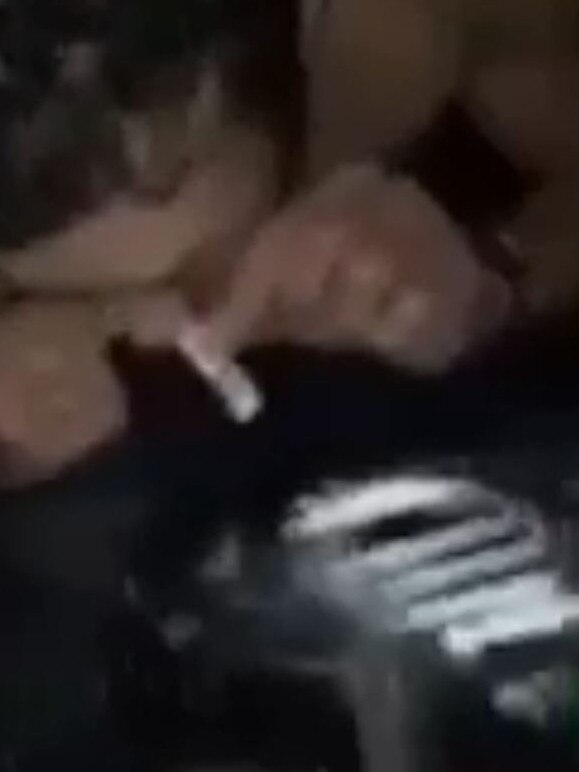Rita Panahi: The AFL’s deliberately weak illicit drug code is a farce
The AFL’s drug code has been exposed as a program designed to hide drug use among footballers by legitimising a loophole players can easily game.
Rita Panahi
Don't miss out on the headlines from Rita Panahi. Followed categories will be added to My News.
The AFL’s illicit drug code is hopelessly flawed by design. It’s a policy devised to protect the AFL’s image by hiding from the public the incidence of illicit drug use among players.
Under the current system the public is kept in the dark about the number of positive tests recorded.
The absurd self-reporting rules make it nigh on impossible for any player to have two strikes against their name, which would see them named and penalised.
Not surprisingly, we have not seen a single player be suspended or named publicly for recording a second strike, let alone a third, since the weakened drug policy was implemented six years ago. Sadly, for the league some players are dumb enough to allow their illegal drug use to be filmed, blowing apart the AFL’s carefully crafted image.
In recent years we’ve seen the likes of GWS’ Shane Mumford and St Kilda’s Jake Carlisle record a strike after videos of their drug taking were made public.
One has to ponder the extreme idiocy that sees adults record their illegal behaviour in the age of social media but that’s a column for another day.
On Thursday Western Bulldogs star Bailey Smith copped a “notifiable adverse finding”, aka a formal strike, under the illicit drug code and a two week ban for “conduct unbecoming” after a video of him snorting drugs went viral.


Smith can consider himself unlucky. The shoddy way the AFL’s drug policy operates the only chance of a player being named and punished is if they are arrested by police for drug use or possession, as Brad Crouch and Tyson Stengle were at Adelaide in 2020, or if they’re silly enough to record themselves using drugs.
Of course there is also a chance that a player partaking in “recreational drugs” will test positive to a performance-enhancing drug as Collingwood’s Lachie Keeffe and Josh Thomas did in 2015. After all, one shouldn’t be surprised if the bikies manufacturing these drugs aren’t running perfectly sterile labs; cross-contamination can occur between batches of performance-enhancing and illicit drugs.
Under the AFL drug code players escape receiving a strike by merely self-reporting; so a player can have multiple positive tests without ever facing a penalty or public exposure.
Even the player’s club is kept in the dark about their illicit drug use, with only the club doctor advised.
The AFL loves to preach to the masses about everything from race relations to gender issues to climate change but it can’t even run its own competition in a clean and transparent manner.

Depending on who you listen to, drug use among the game’s elite is rife and the league’s deliberately weak drug code has emboldened some reckless behaviour among young men with the dangerous combination of high disposable incomes and plenty of spare time to kill.
It’s not so much that the league has a permissive attitude to illegal drug use but that it prioritises protecting its brand above everything else including player welfare, transparency and the law.
Let’s not forget each incidence of illicit drug use involves breaking several laws.
This issue is far bigger than Smith. It exposes a program designed primarily to hide habitual drug use among elite footballers by legitimising a loophole where players self-report to avoid strikes.
One has to note that the drug code was already weak before the AFL watered it down further in 2016.
After all, we had players with serious drug issues, such as Ben Cousins, who never returned a positive sample because the testing regime was so easily gamed.
If the AFL was serious about reducing illicit drug use among players, it would implement hair follicle testing for every player two to three times a year and it would make the results public.
The Herald Sun reported in March 2016 that hair follicle tests showed 11 Collingwood players returning positive samples for illicit drugs. That’s just one set of tests at one club. Extrapolate that across the league and you get a picture of the problem.
But it’s not an insurmountable problem. With a little transparency and effort the AFL could see meaningful change in player habits. Just imagine what would happen if the league punished illicit drug use the way it punishes players gambling on the game.
In 2019 Collingwood’s Jaidyn Stephenson copped a 22-week ban (12 of which were suspended) and a $20,000 fine for betting a total of $36 on three AFL games, even though he self-reported and was cleared of any match fixing concerns. A heavy price for a 20-year-old who’d stuffed up.
But players who continuously flout the game’s illicit drug rules, not to mention the law of the land, get the equivalent of a group hug and have their identity protected. What a farce.
It’s clear the AFL prefers empty virtue signalling to doing something meaningful to reduce illicit drug use among its players.



